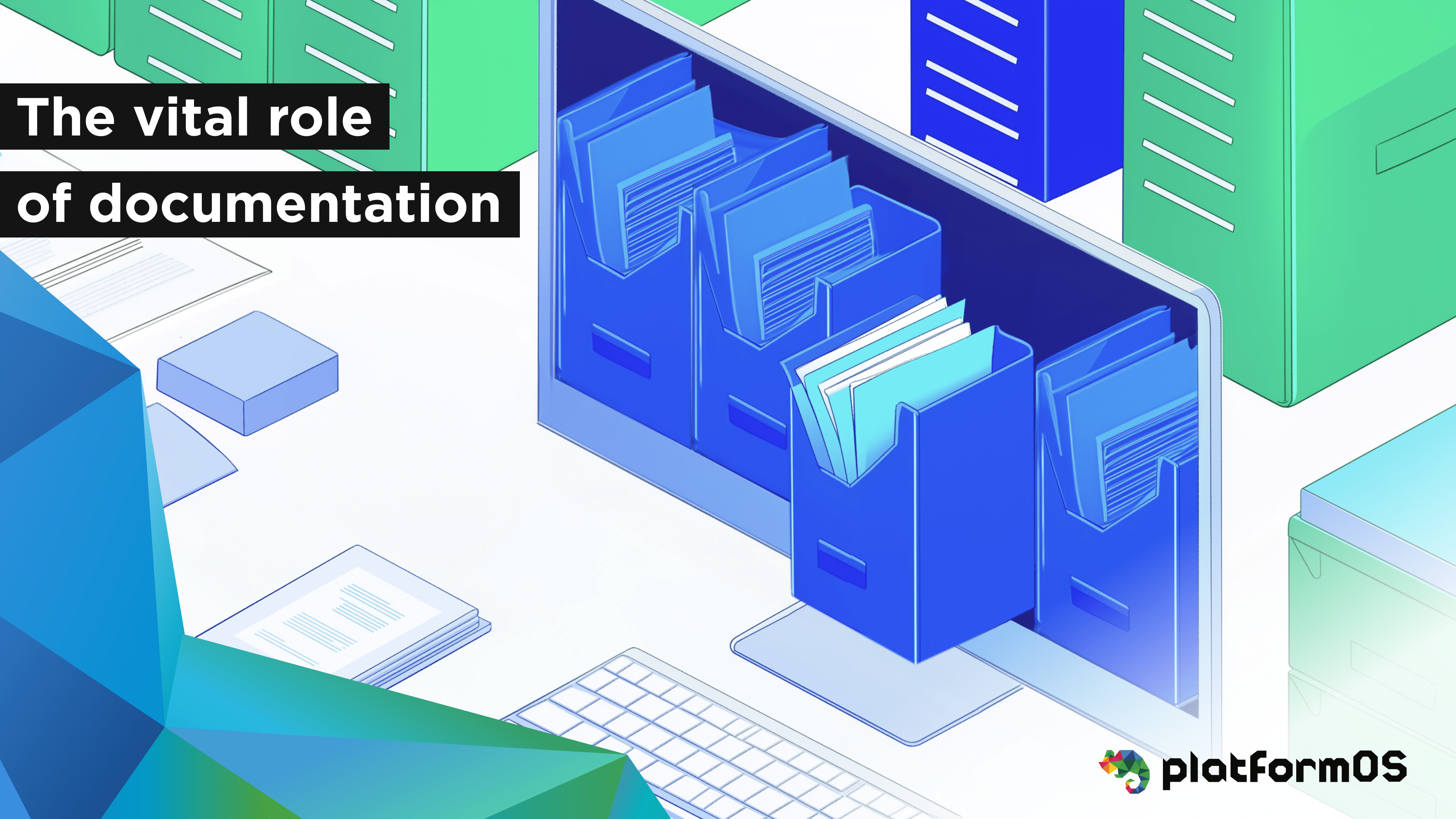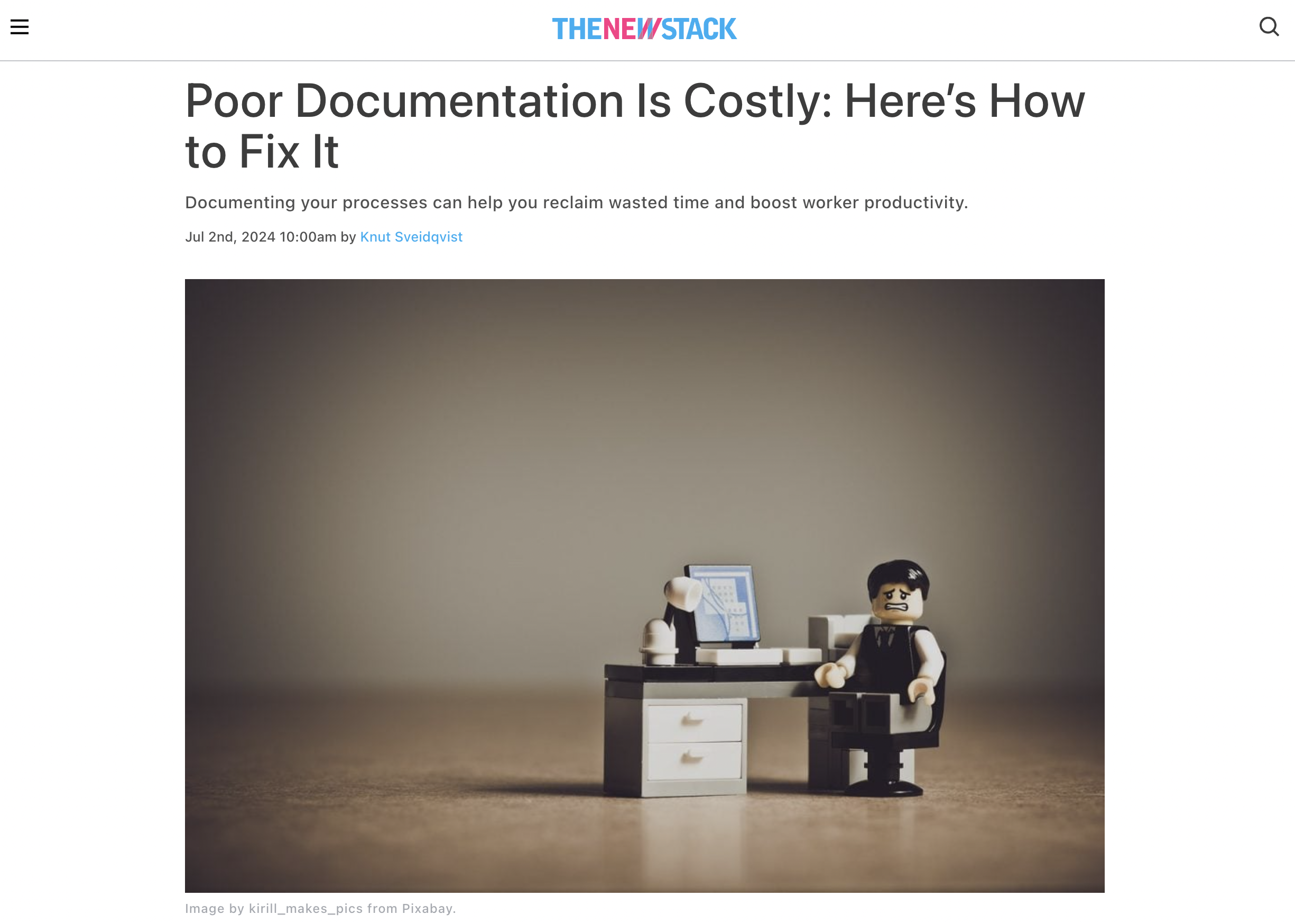





We recently came across Knut Sveidqvist's article, Poor Documentation Is Costly: Here’s How to Fix It, and we couldn't agree more with the points raised.

Documentation is often viewed as a "necessary evil," but in reality, it plays a crucial role in the success of any organization. We'd like to share how we have implemented some of these best practices with our open-source documentation tool, DocsKit, and highlight additional insights on the importance of high-quality documentation.
Sveidqvist rightly emphasizes that effective documentation can reclaim wasted time, boost worker productivity, and enhance overall business operations.
Documentation contributes in various ways, including user satisfaction, retention, reduction in support tickets, decreased marketing costs, and improved search engine optimization (SEO). Well-structured documentation can drive organic traffic and serve as a trust signal to potential clients and developers, ultimately contributing to marketing efforts.
For more insights on the importance of high-quality documentation, you can read our article, The Importance of High-Quality Developer Documentation in 2024: Insights from Last Year's Surveys.
It's crucial to convey this value to organizations so they understand that documentation is not a cost center but a vital component of their success. Good quality documentation can significantly contribute to smoother operations, better onboarding processes, and quicker problem-solving capabilities.
One of the standout points in the article is the focus on internal documentation. Often, when we discuss documentation, the emphasis is on client-facing or developer-facing docs. However, internal documentation is equally important. At platformOS, we recognize this and have built our operations manual, which is a comprehensive collection of all processes, data, and necessary information for the functioning of our company, on an internal DocsKit instance.
Practical use cases highlight the importance of internal documentation. For instance, we've all experienced the frustration of endless meetings or constant messaging to find answers and get unblocked. This eats up a significant amount of time and energy, with all the context switching and calls. Having a centralized place where everything is documented and organized for easy access can save considerable time and effort.
For example, if you’re onboarding a new team member, having a step-by-step guide readily available could save days of back-and-forth communication. Similarly, if there’s a system outage, detailed troubleshooting steps in your internal docs can help resolve the issue quickly without needing to track down the right person.
This is where DocsKit comes into play. We’ve built our operations manual on a DocsKit instance, allowing everyone to contribute easily through the Docs as Code workflow. This means our internal documentation is always up-to-date and accessible, providing a centralized, organized resource for our entire team.
Sveidqvist's advice to stay moderate on software tools and opt for simple platforms is spot on. At DocsKit, we aimed to create a streamlined and simple experience throughout the entire documentation process. Our platform is easy to set up and use, yet it is extendable limitlessly through platformOS modules, such as video course modules or community modules.
We've developed a built-in Docs as Code editorial workflow that covers the documentation process from the get-go. This workflow ensures that documentation is created, reviewed, and maintained systematically. We also provide education and training to clients on how to leverage this workflow effectively. Additionally, we offer a free Docs as Code video course for beginners, so you can learn more about this approach at your own pace.
DocsKit’s balance of simplicity and extensibility ensures that users can customize their documentation environment to meet their specific needs without overcomplicating the process. This streamlines their documentation efforts and enhances the overall quality and consistency of their documentation.
It is important to highlight the advantages of using DocsKit over traditional formats like PDFs. A DocsKit site with built-in navigation and search capabilities can significantly enhance discoverability and boost productivity. Users can quickly find what they are looking for instead of sifting through outdated and long-format documentation. For more on this, you can read our case study about transforming the Washington DC Department of Buildings (DOB) documentation processes, which compares PDF documentation to DocsKit.
Additionally, DocsKit seamlessly integrates with third-party tools such as linters and AI tools like Ekline, further enhancing the user experience. These tools can provide content recommendations and check for adherence to style guides and accessibility requirements, making the documentation even more user-friendly and efficient. For more insights on how AI tools integrate with DocsKit, check out our article about our partnership with Ekline.
DocsKit’s balance of simplicity and extensibility ensures that users can customize their documentation environment to meet their specific needs without overcomplicating the process. This streamlines their documentation efforts and enhances the overall quality and consistency of their documentation.
Clear communication and productive collaboration are essential for any organization's success. Effective documentation plays a pivotal role in achieving these goals. By investing in proper documentation practices, using the right tools, and maintaining a focus on both internal and external documentation, organizations can unlock significant efficiency gains and enhance worker and user satisfaction.
At platformOS, we are committed to helping organizations realize the full potential of their documentation efforts. By implementing a robust Docs as Code workflow and providing a user-friendly platform, we ensure that our clients can achieve their documentation goals efficiently and effectively. As Sveidqvist rightly points out, even small steps can lead to significant gains in the long run — and with DocsKit and the platformOS team, you’ll have our support every step of the way.
You can start improving your documentation today with our all-in-one documentation tool.
Sign up now to streamline your processes and unlock your organization’s full potential.